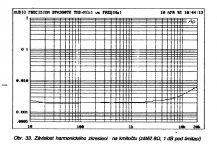Sorry but can't help you there..........Now, if someone would find such a chassis supplier in NA, this would be indeed something worth sharing. I'm myself sick of the Bud Industries and Hammond overpriced crap.

Regarding parameters, this was DPA380 THD vs. frequency, 8ohm load, 1dB below clipping:
If you want to be taken seriously, please quote the source of those measurements (including other measurement conditions, output power, bias, etc...).
I wonder what the subjective crowd thinks in this particular case about relying on THD measurements as a performance metric. Even so, the results are, as expected, mediocre.
Public resources.
Amaterske radio, 9/1992, p. 435, fig. 33.
If YOU want to be taken serious, study the magazine cited. Audio Precision shown in the image posted. Specs of the amp in the magazine.
Amaterske radio, 9/1992, p. 435, fig. 33.
If YOU want to be taken serious, study the magazine cited. Audio Precision shown in the image posted. Specs of the amp in the magazine.
Last edited:
Even so, the results are, as expected, mediocre.
Mediocre? In 1992? You show yours at 100W + !
380: it was measured at prototype of this amp, before seventeen years, by first AP ONE in this country...1 dB below clipping was approximately 120W into eight, bias was 200 mA. SNR was 124 dB, ref. to full power, IHF A and 120 dB linear 20-20k, input shorted...It was with bipolar input stage, later with LN fets was result 3 dB better...
Public resources.
Amaterske radio, 9/1992, p. 435, fig. 33.
If YOU want to be taken serious, study the magazine cited. Audio Precision shown in the image posted. Specs of the amp in the magazine.
Sorry, I have no possibility or interest to dig in 17 years old eastern europe hobby magazines. The burden of proof is on those making the claim. The same applies for disclosing the schematics, etc...
Anyway, a Self Blameless has about the same performance at under 50% complexity. And without golden screws.
SNR was 124 dB, ref. to full power, IHF A and 120 dB linear 20-20k, input shorted...
This is an interesting claim and result. What was the feedback resistor value?
And one little notice: it was seventeen years ago...next year I will have new one and its parameters will be similar to your, Ovidiu, be sure, although there will be golden screws again... 😎
Not using 17 years old components I assume.........Anyway, a Self Blameless has about the same performance
Not using 17 years old components I assume.........
Oh yes, that was with 3MHz Ft bipolar outputs. With 3281/1302 the performance was much better. A peek in D. Self book would help.
But then we are talking 20 years old stuff. I have no further interest in pursuing ancient stuff. Come up with your latest results and we may have a discussion about.
At least it does not look like built by 14 years old school boy, as we can see from images on syn08's webpage.
BTW, the distortion shown is below any audibility level.
BTW, the distortion shown is below any audibility level.
And one little notice: it was seventeen years ago...next year I will have new one and its parameters will be similar to your, Ovidiu, be sure, although there will be golden screws again... 😎
With or without golden screws, that would be interesting, keep me updated. I would be very curious to find out how you provided enough loop gain at 20KHz by using a simple compensation like yours, while mantaining a reasonable phase margin.
At least it does not look like built by 14 years old school boy, as we can see from images on syn08's webpage.
I can feel the love here

I am sorry to dissapoint you. I am a humble DIYer, I can't compete with you guys, you are professional DIYers

All that jazz...keep smile, Ovidiu...🙂
Don't worry, I don't get easily upset 🙂
And what about this?
Honestly, I don't see a thing in that picture.
But then, as a DIYer, I couldn't care less about how it looks (as long as it's decent, which it seems to be). I care about architecture, performances and stability. And last but not the least, cost.
So there, it looks good 🙂
Still doesn't tell squat about performance.
- Status
- Not open for further replies.
- Home
- Amplifiers
- Solid State
- Pavel Dudek's (Upupa Epops) amplifiers II

